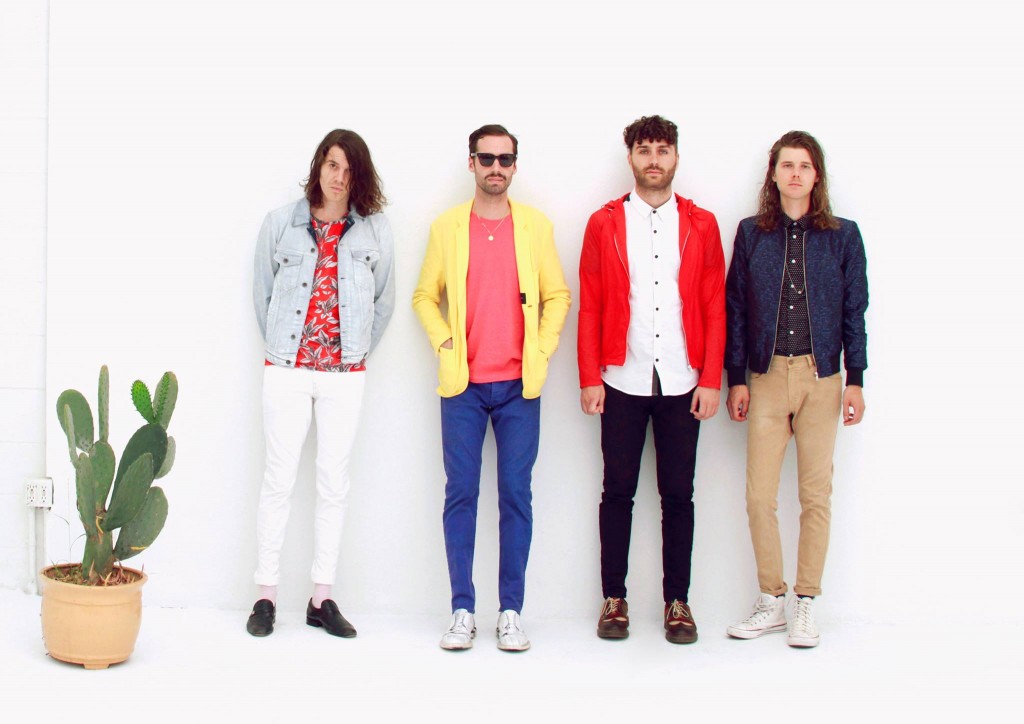
As chilly temperatures and snowstorms finally start hitting the East Coast, survival methods can vary from person to person. Hot chocolate, Snuggies and generous amounts of whiskey are all tried and true, but for those looking for a musical antidote, switching playlists up to sunny-sounding jams can make all the difference. If that kind of self-deception is up your alley, Miami Horror might just be the ticket.
Originally formed in 2007 as a solo project of Australian producer Ben Plant, Melbourne-based four piece Miami Horror peddle a distinct, endlessly-groovy synthpop sound. Boasting collaborations with the likes of Kimbra and Neon Indian’s Alan Palomo, the band’s 2010 debut, Illumination, offered a vibrant entry in the genre, matching dreamy synth sonics with a healthy dose of nu-disco guitar work. Quickly catching fire on the Australian charts, the band steadily built a dedicated worldwide following (with the inclusion of their catchy “Sometimes” on the Grand Theft Auto 5 soundtrack certainly not hurting).
After five years on the road touring their energetic, playful and often raucous live show, Miami Horror dropped their second album last year. All Possible Futures dove even deeper into the post-disco vibes, reaching new heights of driving instrumentation and tight production. The band embraces 80’s vibes but never gets bogged down in nostalgia, with nearly all of the album’s 15 tracks sounding like a potential single.
Miami Horror is hitting the US for a brief five date tour, including a stop at Royale tonight, and we took the opportunity to chat to co-frontman Josh Moriarty. He told us about stage antics, breaking the US and dream venues.
Allston Pudding: Miami Horror started as Ben Plant’s producer project . How did you first get involved?
Josh Moriarty: Well yeah, very early on he had made two or three remixes and then on the first EP I sang on one song and then Alan [Palomo] from Neon Indian sang on another, then it was three instrumental tracks. From that point the band started; so pretty much straight away. He had made a few things but then we were all doing it as a band from that point. We were touring a lot with the band before the first record was completed, which Aaron and myself worked a lot on.
So we all got involved relatively quickly, but I suppose Ben’s sort of the driving force; the main brains behind the whole thing.
AP: It’s still a collaborative project though, right?
JM: Yeah. He’s always largely in the driver’s seat I suppose. Aaron did a lot of the production on the new album though, and then we’ll just kind of all throw in our bits and pieces. Have you seen us play live?
AP: Yeah I caught you at Electric Forest.
JM: (chuckles) That a was a weird one! That was fun though. I think I managed to climb on top of the stage and do a couple of songs.
AP: You did! Don’t think I’ve seen anyone pull off anything quite like that before.
JM: That’s good, glad I can still shock people now and then.
AP: You guys throw back a lot to 80’s sounds and disco, but always manage to avoid sounding stale or rehashing too much. When you’re writing are you conscious of using old school influence without sounding too much like an imitation?
JM: Yeah, I guess it’s just about picking the right bands to be influenced by and also making sure you’re using new technology, new sounds and new ideas at the same time. We never want to be just a rehash thing, though obviously we love a lot of that stuff. For the new record it was Talking Heads and InXS, but also a lot of bands that were around at the same time but weren’t as popular. Finding some of the half-hit songs and using those as influences.
But yeah, we’re always using new technology, so I think that’s probably what makes it not so completely throwback-y and ripoff-y.
AP: How did recording in LA influence the latest album?
JM: It added another level of openness and exploration. The first record was recorded in Melbourne where we’d all lived for so long and was home, and then we started playing in America and the guys moved over there.
Then you’re away from home, you know? You’re living in a different country, it’s sunny every single day, there were other bands around and the guys were DJing a lot at pool parties. I guess it just gave it more of an open, summery vibe. Your environment definitely influences your music. Melbourne can be a bit dreary sometimes. The winter’s a little harsher and it doesn’t have that Californian thing. So yeah, being in LA added that element to the music.
AP: How has the experience of building an audience in the US compared to Australia?
JM: The Australian thing all just happened, well, not easily, but we got played on a radio station here that’s the main youth radio station [Triple J]. They were on board very early on. With that we were booked for a lot of the festivals in Australia, so it wasn’t that hard to do it from there. Because Australia’s not that big, there’s only five or six of the big cities, so you play those and then do a few festivals here and there and you’re established. (chuckles) It makes it sound easy, which it wasn’t, but it happened pretty quickly and for a few years we did a lot of those things.
The American thing is a bit harder. There are more places to play; it’s more spread out. We’ve done a tour once or twice a year from the past five years now and every time we start to incorporate more cities. Some places we go people will be like “man I’m glad you finally made it out here, we’ve been waiting for you to come since 2010!” It’s been a lot of fun. It’s nice playing places you haven’t been before. Smaller clubs shows, with people all jazzed up and ready to go.
The last tour we did was quite extensive- 25 shows over a couple of months. There were a bunch of places we hadn’t played and it was nice to start to establish ourselves in those towns. I think we’ll definitely be going back. We’re just gonna keep doing it!
AP: I was really blown away by some of your stage antics. Do you ever pre-plan certain moves or flourishes after you see what kind of stage you’re working with, or is that kind of stuff off the cuff?
JM: You kind of have your book of tricks that you like to use and you just pick your moment. It’s not really hugely planned, but you know what things you like to do. When that moment arises, if you see that opportunity and there’s a little move you’ve picked up off of somebody then you pull it out.
The climbing stuff is the old At The Drive In/ Mars Volta move, or Eddie Vedder from Pearl Jam. I always loved it when those bands did it, so why not in Miami Horror?
AP: Through your time together, synth music hit a pretty massive worldwide popularity that it didn’t have in the 2000s. Is that something you were aware of as that was happening?
JM: I guess you’re always aware of things going on around you. It’s changed even more now; I guess with Chet Faker becoming really popular there’s a lot of that chill R&B sort of thing, with things a bit slower and a bit more soulful. I’m seeing that happen a lot.
When we first started there were a lot of synth bands around. Of course, we took influence from them too, it’s not like we were the first. Now we’re starting to write a new record, so we’re getting influenced by new things, but I guess you have to find the things that make you you. The vocals are kind of specific to us and the friends we use to make our music, and then obviously the type of chords and melodies you use will be what makes you you as well.
What I don’t think matters so much are your synths, or changing to be more chill, or if it’s house, because house is popular, or any of these things. We use David Bowie as an example; he was a 70s rock guy because that was the thing that was going on, then he got more 80s because the 80s changed things. You take what’s going on around you but you’ve gotta always be yourself. Even look at Justin Bieber: he’s got his own voice and he’ll always sound like him, but he’s doing whatever the cool new sound is.
You’ve gotta find out what makes you you but change with the time and incorporate new sounds and technology.
AP:Are there any venues worldwide that you really aspire to play?
JM: Madison Square Garden- that would be alright, wouldn’t it? Haven’t done the Hollywood Bowl; that would be pretty sweet. There’s this Red Rocks place in America; we were around there but didn’t play it. Some people told us that’s pretty badass, so you want to tick those sorts of spots off. Those outdoor amphitheater places are some of the favorite. Then Wembley. When’s Wembley happening?! I think that’s well away though.
AP: What’s next for Miami Horror after this record?
JM: Writing the new record, man. Starting on number three. We’ve got about three or four songs that we’ve started working on. Nothing finished yet, obviously, but I think that’s the next priority. We’ll continue to tour and I think there’s a handful of shows around Coachella in April. There’s potential for a European tour and I guess we’ll probably do another American tour as well. We’ll probably put out another single from the second record and keep playing in support of that, but it’s about writing number three now. Gotta write some smash, smash hits! Gotta have some huge songs- pay the bills, get everyone excited so we can do Wembly!!
Miami Horror will be at Royale tonight, 1/20 with openers MOTHXR and Foreign Air. Tickets are still available here.
